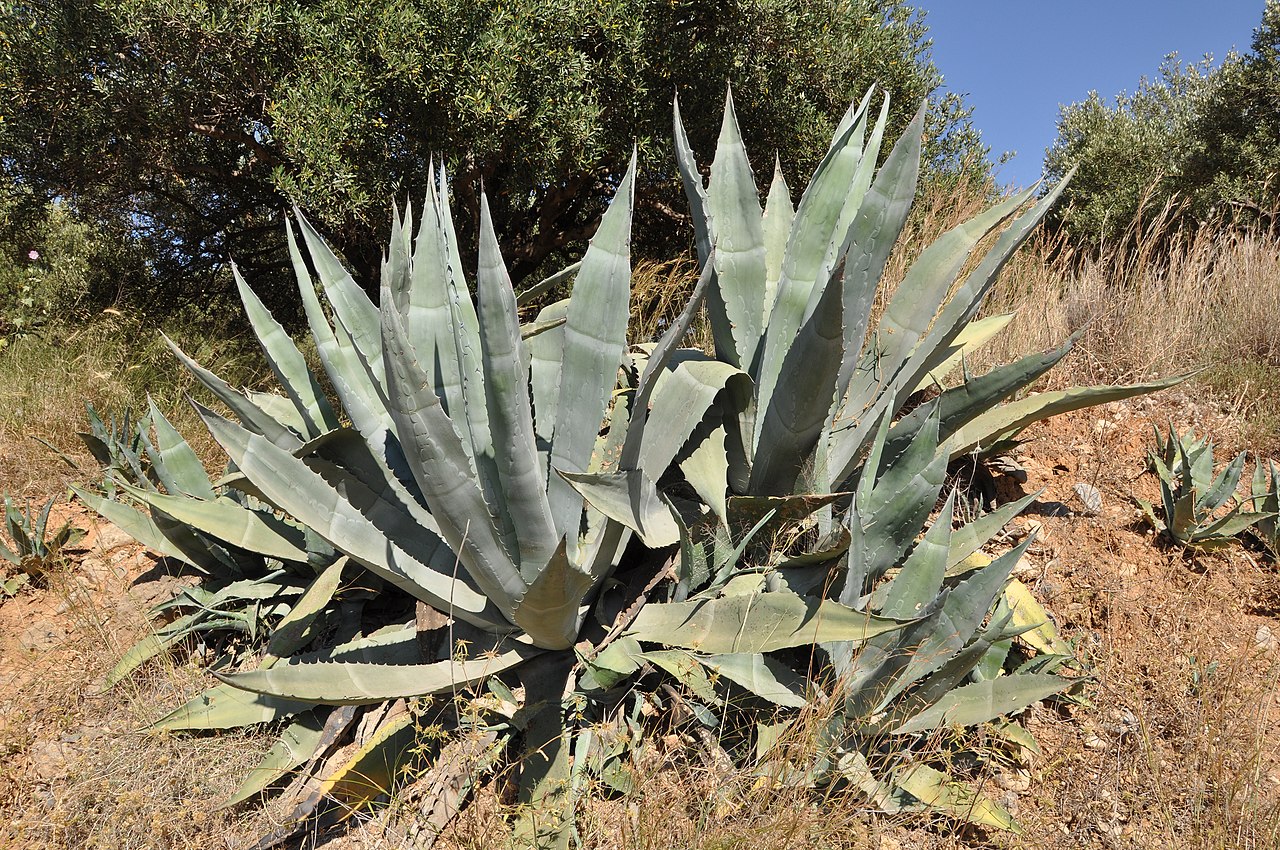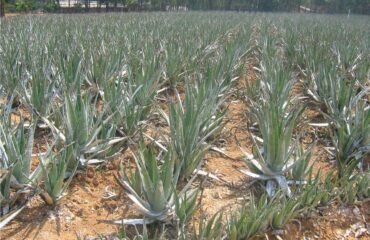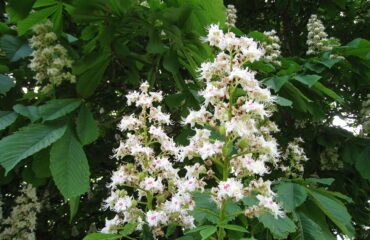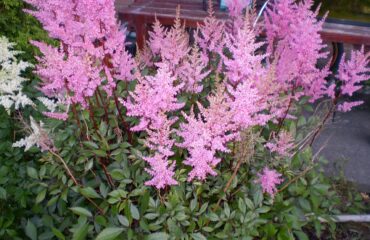Agave americana, commonly known as the Century Plant, is a striking and robust succulent native to Mexico. It is renowned for its large, rosette-forming leaves that are blue-green, thick, and fleshy with sharp spines along the edges. Each leaf can grow up to 6 feet (1.8 meters) long, making the entire plant an impressive architectural specimen. Despite its name, the Century Plant typically blooms after 10-30 years, producing a towering flower spike that can reach up to 30 feet (9 meters) tall, adorned with clusters of yellow flowers. After flowering, the plant dies, but it often produces numerous offsets (pups) around its base.
Preferred Growing Conditions:
- Soil Type: Prefers well-drained, sandy or gritty soil; tolerates poor and dry soils but thrives in soil with good drainage.
- Sunlight: Requires full sun; needs at least 6-8 hours of direct sunlight daily for optimal growth.
- Temperature: Hardy in USDA zones 8-11; prefers warm climates and is highly tolerant of heat and drought.
- Water Needs: Low; drought-tolerant once established but requires occasional watering during prolonged dry periods.
Agave Americana (Century Plant) Propagation Methods:
1. Offsets (Pups):
Propagating Agave americana from offsets is the most common and reliable method, particularly because the plant naturally produces these pups around its base.
- Timing:
- Best done in spring or early summer when the plant is actively growing.
- Method:
- Identify the offsets growing around the base of the parent plant.
- Gently remove the parent plant from its pot or the ground to expose the offsets and their roots.
- Use a clean, sharp knife or pruners to carefully cut the offsets away from the parent plant, ensuring each pup has some roots attached.
- Planting:
- Plant the offsets in individual pots filled with a succulent or cactus mix that drains well.
- Allow the cut surfaces to dry and callous over for a few days before planting to prevent rot.
- Once planted, place the pots in a bright location with indirect light and avoid watering immediately. After a week, start watering sparingly.
- Care for New Offsets:
- Water sparingly, allowing the soil to dry out between waterings.
- Gradually acclimate the offsets to brighter light conditions over a few weeks.
- Continue regular care as they establish and grow.
2. Seed Propagation:
Growing Agave americana from seeds is less common and more time-consuming but can be rewarding for those interested in cultivating new plants from scratch.
- Seed Collection and Preparation:
- Collect seeds from mature plants after the flower spike has produced seed pods.
- Allow the seed pods to dry on the plant, then collect and clean the seeds once the pods split open.
- Seeds can be stored in a cool, dry place until ready for planting.
- Sowing Techniques:
- Fill seed trays or small pots with a well-draining seed-starting mix.
- Sow the seeds on the surface of the soil and lightly cover with a thin layer of sand or soil.
- Mist the surface lightly and cover with a clear plastic lid or plastic wrap to maintain humidity.
- Place the trays in a bright location with temperatures around 70-75°F (21-24°C).
- Germination Requirements:
- Seeds typically germinate within 2-4 weeks under optimal conditions.
- Remove the cover once seedlings emerge to provide better air circulation.
- Keep the soil slightly moist and provide bright, indirect light to prevent the seedlings from becoming leggy.
- Care for Seedlings:
- When seedlings have developed several true leaves and are sturdy enough to handle, transplant them into individual pots.
- Choose a well-draining soil mix and a sunny location for the seedlings.
- Note that seed-grown plants may take several years to reach maturity and their large size.
3. Rhizome Cuttings:
Rhizome cuttings can be used to propagate Agave americana, particularly for producing new plants from the underground stems.
- Timing:
- Best done in late spring or early summer when the plant is actively growing.
- Preparation:
- Carefully dig up the plant and clean the rhizomes.
- Select healthy rhizomes and cut them into sections, each with a few buds or eyes.
- Allow the cut surfaces to dry and callous over for a few days before planting.
- Planting:
- Plant the rhizome sections horizontally in pots filled with a light, well-draining potting mix.
- Cover lightly with soil and water to settle the soil.
- Place the pots in a bright, shaded area initially.
- Rooting and Growth:
- Rhizomes will develop roots and shoots over several weeks.
- Maintain consistent moisture and gradually acclimate the plants to brighter light as they grow.
4. Tissue Culture:
Tissue culture is an advanced propagation method used primarily in commercial settings to produce large numbers of uniform plants quickly. This method involves growing plant tissues in a sterile, controlled environment.
- Process:
- Small pieces of plant tissue, typically from the growing tips or meristem, are sterilized and placed in a nutrient-rich, sterile medium.
- Under controlled conditions, the tissue forms a callus, which then differentiates into shoots and roots.
- Once the plantlets are large enough, they are transferred to soil or a suitable growing medium to acclimate to normal growing conditions.
- Advantages:
- Produces a large number of uniform plants quickly.
- Can propagate disease-free plants and maintain rare or desired characteristics.
Care for Newly Propagated Plants:
- Place new plants in a location with full sun and well-draining soil.
- Water sparingly and ensure the soil dries out completely between waterings.
- Avoid over-fertilizing; a light feeding with a balanced, diluted fertilizer once or twice during the growing season is sufficient.
- Protect from frost and extreme temperature fluctuations.
- Provide support if needed to prevent wind damage, especially for larger plants.
Common Challenges and Solutions:
- Root Rot: Ensure good drainage and avoid overwatering, especially in heavy soils.
- Pests: Monitor for common pests like aphids, mealybugs, and scale. Treat infestations with insecticidal soap or neem oil if necessary.
- Leaf Browning or Yellowing: This can indicate overwatering or sunburn. Adjust care accordingly.
Additional Tips:
- Rotate pots regularly to ensure even light exposure and prevent the plant from leaning towards the light.
- Clean leaves periodically to remove dust and allow for optimal light absorption.
- Use pots with drainage holes to prevent water accumulation and root rot.
- Handle with care as the sharp spines on the leaves can cause injury.
Propagating Agave americana is a rewarding process that allows you to enjoy the impressive and dramatic presence of this robust succulent. Whether you choose to propagate through offsets, seeds, rhizomes, or tissue culture, with proper care and attention, the Century Plant will thrive and become a striking centerpiece in your garden or landscape.
Share this article



